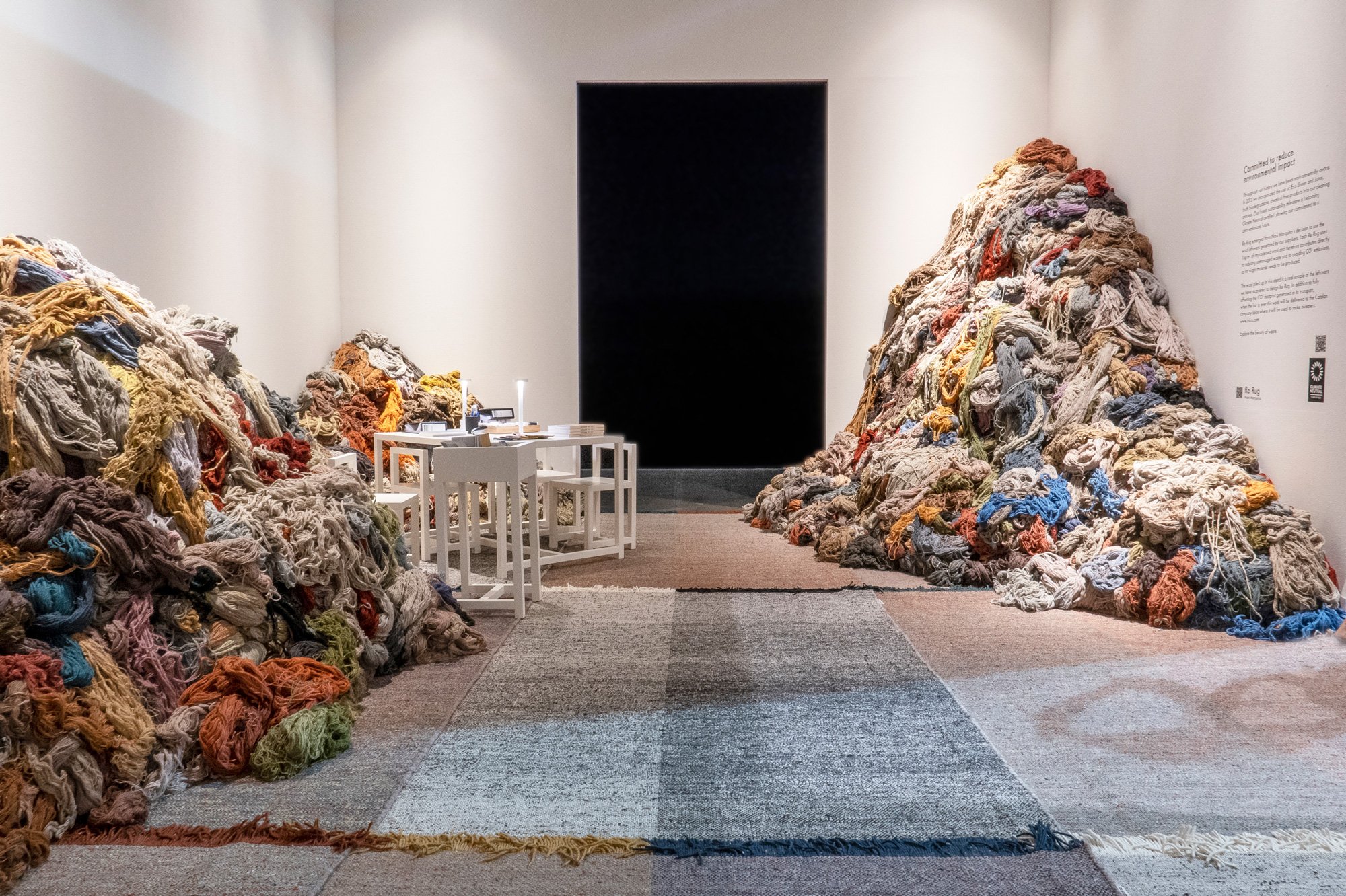
June 15, 2022
Green Design Makes a Strong Showing at Milan Design Week 2022

“After fast fashion, the construction and design industries account for the biggest amount of waste. We need to accept that using upcycled materials and better processes will change the look and feel of the buildings and products around us,” said Italian architect Mario Cucinella. His Design with Nature installation was the centerpiece of this year’s Salone. “[It was] an installation in which we [aimed] to show that our vision of the future needs to be ecosystemic and capable of bringing knowledge, skills, and technologies together for a new generation of materials and design.” The topographic landscape—built using planks of carefully-sourced wood—operated as a lecture hall, a library of new sustainable materials, a lounge, and a food court offering meals made using local produce.
The architect aimed to promote the ideas of full circularity and ecological transition in which cities, rather than the earth itself—become mines for raw upcycled material. This dynamic installation highlighted what has already been done but also served as a call to action for designers and brands to do more.
Throughout the fair, a wide range of brands revealed new products manufactured using upcycled materials. While Italian brand Gan Rugs debuted the latest versions of Álvaro Catalán de Ocó’s Plastic Rivers carpet series—handmade using 100 percent recycled PET—Spanish producer nanimarquina debuted Datasheet, the newest iteration of its Re Rug initiative crafted using leftover wool from its suppliers. By implementing these offcuts rather than automatically sourcing new material, the brand can reduce its unmanaged waste and avoid the CO2 emissions that come with standard transportation.

Though the fair had a robust offering with its2,175 exhibitors, a lot of the excitement also took place in Milan’s city center. Upcycled material could be found everywhere. Los Angeles-based Otherside Objects debuted at multi-exhibition venue Alcova with its salvaged wood outdoor loungers. At Certosa Initiative, Israeli studio Studio RDD revealed a new use for the millions of disposal face masks that have accumulated on the planet in the past few years. The practice has envisioned an easy way to repurpose them as upholstery. Moroso teamed up with Dutch designer Wieki Somers to develop the Somewhere collection—a series of daybeds and modular bookshelf using Kvadrat Really upcycled wool and cotton textile boards.
As wood continues to become an important fixture of sustainability, several exhibitions highlighted its importance. At the Rossana Orlandi gallery, British designer Brodie Neill debuted Origin, a series of sinuously-crafted tables using reclaimed African hardwood parquetry boards. Also on view at this venue were new furnishings by Finnish manufacturer Vaarnii. Championing an honest approach to joinery, the company uses Pine native to the country that grows on mass and that is sustainability managed. The AHEC (American Hardwood Export Council) teamed up with British practice Studio Swine to build a massive “cratescape” showcasing 22 contemporary works implementing underused Northern American wood.

Milan Design Week has always been about dramatic, immersive set designs. This year’s edition featured biophilia and forests as common themes. Few exhibitions or product displays did without floral or plant-based arrangements. Perhaps the most striking of these was Montreal-based lighting studio Lambert & Fils mounted and DWA Design Studio-conceived Caffè Populaire installation complete with plantings and flower-based wallpaper funrished by New York-based studio SUPER FLOWER. Also staged at Alcova, the aperitivo garden came complete with fountains and various applications of the brand’s new Silo Collection. Calico Wallpaper teamed up with AB Concept and NUDE Glass to launch its latest Tableau collection. Embedded in an indoor garden within the Orobia 15 venue, FLOS introduced the Nicta collection. These outdoor bollards are carefully calibrated to emit light so as to not disrupt certain biorhythms and animal movement patterns.
Renowned architect Stefano Boeri mounted an actual Floating Forest in the Darsena canal. This unique installation was meant to inspire a sense of awareness and remind Milan Design Week visitors of the value of nature.
Indeed, the number of new products and projects using sustainability in some form or other was staggering. The overall focus on this topic didn’t stop there. Noted design duo Formafantasma hosted the Prada Frames symposium throughout the week. The program took a scientific look at the complex relationship between the natural environment and design; the parameters in which the timber industry operates today. Speakers included noted curator Paola Antonelli, creative director Beatrice Leanza, and designer Alexandra Daisy Ginsberg, among other critics and experts.
The idea of sustainability was also expressed in how some traveled to Milan Design Week 2022. London-based PR firm Zetteler endeavored to reach Milan via high-speed rail rather than short-haul air travel. Perhaps the trend will catch on.
Would you like to comment on this article? Send your thoughts to: [email protected]
Related
Viewpoints
Archtober Invites You to Trace the Future of Architecture
Archtober 2024: Tracing the Future, taking place October 1–30 in New York City, aims to create a roadmap for how our living spaces will evolve.
Projects
Kengo Kuma Designs a Sculptural Addition to Lisbon’s Centro de Arte Moderna
The swooping tile- and timber-clad portico draws visitors into the newly renovated art museum.
Products
These Biobased Products Point to a Regenerative Future
Discover seven products that represent a new wave of bio-derived offerings for interior design and architecture.









